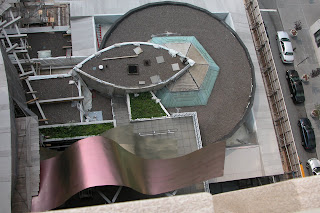 Does your heart race at the thought of unique masonry products? Do you swoon over a finely textured clay body or the very mention of the word "terracotta?" If so:
Does your heart race at the thought of unique masonry products? Do you swoon over a finely textured clay body or the very mention of the word "terracotta?" If so:A) you may require therapy,
B) have we got a deal for you!
The Wisteria Shop is offering your choice of two site-specific restoration materials: reproduction Roman brick or terracotta roof tiles, surplus from Phase III of the Martin House restoration, for a mere five bucks each.
The Roman bricks - each one unique in terms of its organic color and distribution of iron spotting - were produced by Belden Brick Company of Canton, Ohio. The unique bricks required for the Martin House were produced in Belden's kilns in Sugarcreek, Ohio. The clay body and firing formulas employed were intentionally manipulated to produce proactively the kind of color range that occurred more haphazardly in turn-of-the-century brick production. Use them as paperweights, bookends, small craft anchors or, of course, as bricks to build with!
The terracotta roof tiles, produced to duplicate the historic "book" tiles used to crown the Martin House complex buildings, hail from the Tuilerie de Pontigny Aleonard in Pontigny, France. The kilns at the Tuilerie have been in use since the Middle Ages, producing organic irregularities in the color and surface of the tiles that closely approximates the original roof tiles from the Martin complex. These tiles make great cutting boards, trivets or sign boards ready for hand lettering. Buy four and use them as durable plates for a Plowman's lunch at your favorite summer spot.







